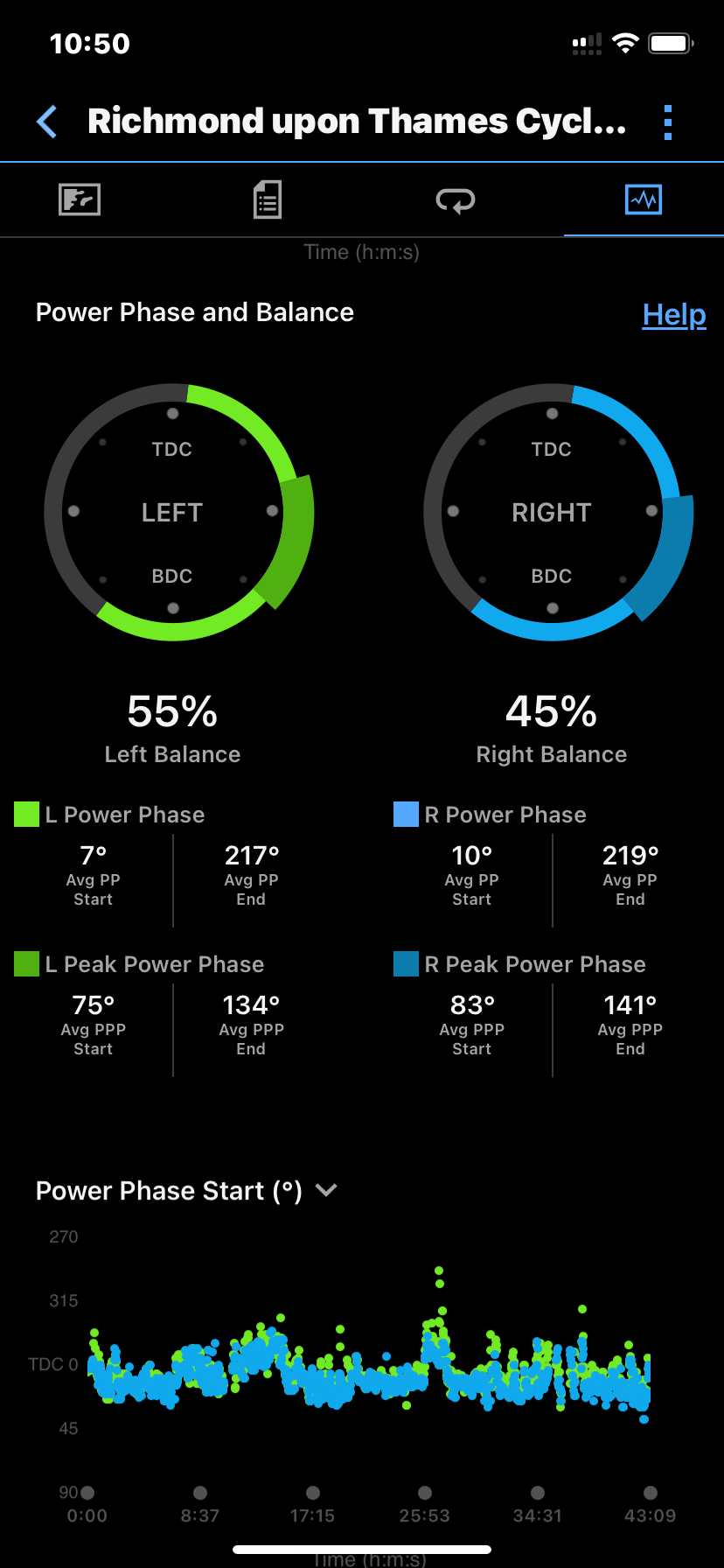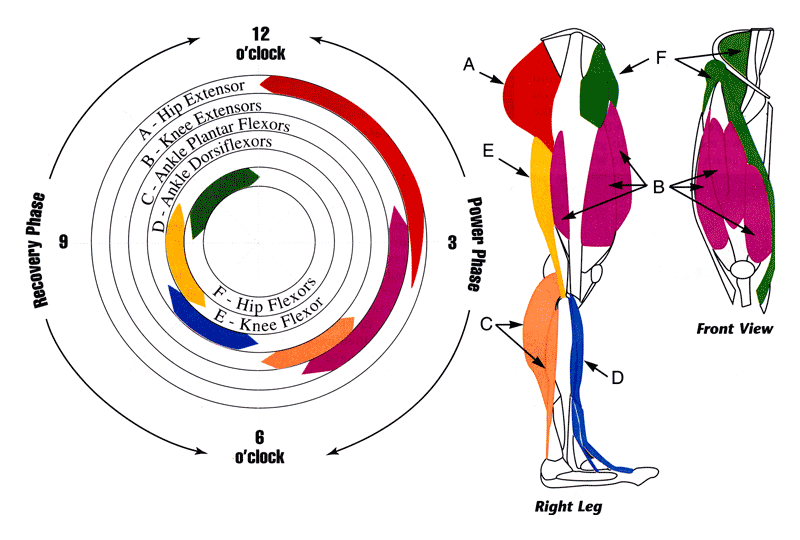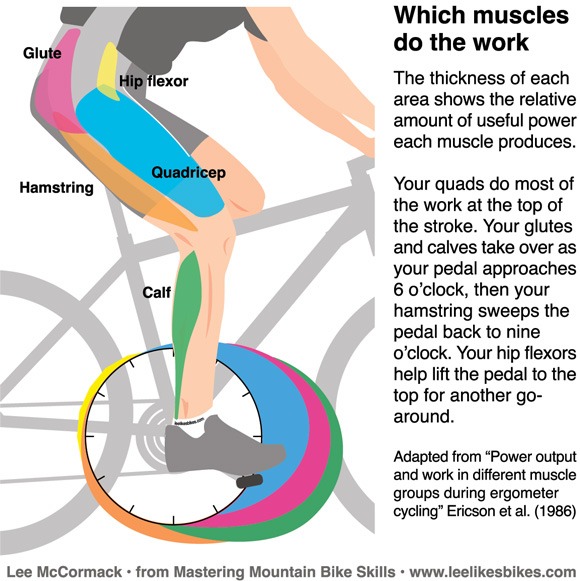 LR Power Imbalance – Garmin Connect’s Cycling Dynamics Stats Prove I Corrected It – Here’s How I did it.
LR Power Imbalance – Garmin Connect’s Cycling Dynamics Stats Prove I Corrected It – Here’s How I did it.
Back in the day I used to have a 50:50 average cycling power balance most of the time but something happened in 2017 that caused it to go way off to like 55:45 and, try as I might with exercises, I couldn’t get back to ‘normal’.
Retul Bike Fit
A Retul bike fit in 2018 corrected a few positional issues and subsequently improved my cycling comfort. The fitter pointed out that I should get shorter cranks when the opportunity arose and that I was slightly twisted in my position. He didn’t look at power imbalance and told me not to fiddle with the cleats nor to add shims (cleat spacers).
As my fitness/power fluctuated over the months, I occasionally looked at the balance stats and remember always being dismayed that the power balance stats were not improving. To no avail, I even focussed on building left leg strength in my occasional visits to the gym.
Power Meters
During all of 2020, 2021 and 2022 I typically favoured Shimano’s R9100P power meter. Mine is super reliable and gave what seemed to me to be a good total reading that tallied with other devices. However, I was fully aware of the power balance issues the R9100P had reported elsewhere, so never dug deeper into my LR balance for those 3 years.
The stats from 2019 and 2023 I’m going to show you in a minute are all made with my original pair of Favero Assioma Duos that are still going strong eight years after I got them – they really are the best power meter ever and widely recognised as accurate! I just don’t often use them these days.
As the Assiomas use the same measurement device, position and method on each side they should perform nearly identically and I would trust them more for LR Metrics than other types of dual-sided power meters based on cranks, spiders and axle measurement.
Cleat position and Shims
I recently ignored the bike fitter and introduced a 1mm shim to the right shoe (two half-millimetre ones).
However, I also moved the right cleat forward toward the toe by a mm or so. That will have a similar effect to adding another shim. I did that because I watched one of Neill Stanbury’s excellent YouTube videos and one of his bike fit subjects seemed to have similar issues to me, plus I didn’t have long enough cleat bolts to add any more shims! #Science
Another weird thing I felt was that my right foot almost felt like it was falling off the side of the pedal and that I was pedalling with the outside of my right foot. So I added a 1mm spacer to the pedal and then moved the cleat inward by one mm. I don’t know why. It just seemed like a good idea at the time. It DID seem to help but I am probably imagining it and need to test this out with some Garmin pedals (see comments below, Assioma does not support PCO)
So then I got to thinking (#dangerous) about how I wear the shoe. Because I felt like I was using the outside of my right foot a podiatrist suggested a small, tapered wedge under the ball of my foot. I did that and it helped me feel the new contact point and seemed to also help take the pressure off the outside of my foot.
However, I think that was the wrong thing to do in hindsight. What I think was happening was that I had the lower BOA dial on my Shimano RC903 cycling shoes done up WAY too tightly, to the point where it might be causing a bunion to form. And it is that bunion which could be lifting the ball of my foot and hence making it feel like I am using the outside of my foot.
So my solution has been to loosen the lower BOA dia (or velcro strap on my other shoes) but keep the top one tight as I like a nice, snug fit.

The Stats – Before & After
I’ve taken some stats from Garmin Connect with 2 different rides from 2019 and two from 2023.
Even though I have used oval chainrings in the past and still do on my TT bike, I hope that the 2019 stats are from regular circular rings…they probably are, but I can’t remember. In any case, as you will see, the 2019 power phase stats seem too short for what I expected from oval rings so they probably are circular ones.
Before Stats (2019) – 172.5mm cranks and Retul-positioned cleats
- Power Phase Range L 210 & 204, R 209 & 205 degrees
- Peak Power Range L 59 & 59, R 58 & 57 degrees
After Stats (2023) – 165mm cranks and ‘fiddled with’ cleat positions
Note that I used the 165mm cranks for a month or so before adding the cleat/shim changes and the 165mm cranks by themselves did not affect the balance stats (I checked), though may well have affected the other cycling dynamics stats (I did NOT check)
- Power Phase Range L 218 & 210, R 220 & 210 degrees
- Peak Power Range L 69 & 73, R 66 & 70 degrees
What the Stats Show & A Bit More Background
A tiny bit more background first:
My initial hip injury occurred on the left side, which I believe triggered the imbalance. I suspect this injury resulted from having my saddle set too high during some intense turbo trainer efforts.
Now when performing single-leg squats, I notice that my left quad is still stronger than the right side, and also exhibits slightly better stability. However, it’s worth noting that my right calf might compensate and be stronger on that side. I am right-footed and have noticed that my right leg appears to be a few millimetres shorter, though this could potentially be attributed to hip twisting rather than an actual bone length discrepancy. Although I don’t have flat feet, I do prefer some arch support.
Also, my current, more relaxed training regimen has led to a decrease in strength of at least 10% compared to my capabilities in 2019, and perhaps even up to 15% weaker.
Stats & Interpretation
What stands out the most to me is how the shorter cranks have shifted the power phase in an anticlockwise direction. This seems intuitively logical, and when you refer to the cycling muscles chart above, you can recognize that this adjustment holds significant implications for the potential interactions between the glutes and quads in performing their respective functions.
Turning to the Power Phase Range and Peak Power Phase Range, we can see a significant increase in the power phase range, while the total range appears similar. Based on this data, it’s hard to determine whether I now possess a more efficient stroke, but it does seem that way.
When I examine the Top Dead Centre (TDC), it’s evident that I now begin to apply some power before reaching that point. I make an effort to engage my hip flexors, and I believe shorter cranks have made this easier.
Throughout the last third of my stroke, little positive power is generated. I try to unload my foot instead of pulling up because when I’ve attempted to actively pull in the past, it has led to knee injuries—so I stopped trying! I find it interesting that while cycling behind friends who are dedicated cyclists, some of them have well-developed calves unlike me! I save my calves and hamstrings for running, or at least that’s what I kid myself into believing.
Hence, I think the length of the crank is responsible for the power phase shift, and the shims are likely contributing to the rebalancing. Although I’m not entirely convinced about the former, considering the relative weakness of my right leg, it raises questions about how it can now generate an equal amount of power over long rides unless the power output of my left leg is lessened.

Take Out
I strongly advise against copying my actions and adjusting your bike position after you’ve already had a perfectly good bike fit.
Despite Garmin Cycling Dynamics stats having been around for quite some time, there hasn’t been much concrete evidence of their usefulness. My examples struck me as reasonably good ones that could quantify the impact of shorter cranks and shims.
I wanted to share something that I found interesting, at least to me. I would be interested in any examples you can share below that demonstrate how one of your positional tweaks affected your Garmin Cycling Dynamics Stats.”
Final thought: It would be interesting to look at cycling dynamics stats with the Kickr Bike. Changing the effective crank length on that whilst using PM pedals is easy.








What is the thought behind really short cranks?
opens up the hips
it’s probably more that i had the wrong size beforehand. tho there does seem to be a mini trend towards shorter ones.
look at the road cycling Australia site (Neills link above) and there is some really interesting stuff there if you are interested in bike fit. he fits lots of high-level cyclists. though, to be fair, so did my retul guy.
It’s funny how the fashion of gear changes in cycling. I always raced 175 cranks and I had a teammate that was a 180 man. For me it was 175 as the best compromise of torque and cornering. 170 feels like my pedals stroke is cut short and 165 seems like a kids size! To date myself, STI and ErgoPower came out during my peak racing years.
I know that short cranks are currently fashionable but I don’t understand it from a physics perspective.
Same thing with handle bars 44cm and tilting in the hoods is
????????.
Also, I’m 6’2” so it is proportional.
this gives a precise calculation: https://bikedynamics.co.uk/FitGuidecranks.htm
this is more generic:
Height Crank Length(cm)
6’0″ (1828mm) 177.5mm
5’11” (1803mm) 175mm
5’10” (1778mm) 172.5mm
5’9″(1753mm) 170mm
5’7″ (1702mm) 165mm
5’5″ (1651mm) 160mm
I had heard the reason for short cranks is they were “more aero”.
Ive never heard that. A few mm of crank less at the bottom of the pedal stroke in dirty air must make a minimal aero difference in terms of the aeroness of the physical component itself
but yes, in the sense that your seat might need to be raised which might make your position more aero. In one of Neill’s other videos, he suggests that maybe a 5mm shorter crank does not mean a 5mm higher saddle. there was some sweet spot argument he used and from memory in that scenario, he suggested instead raising by 2mm.
yes i would also say it felt like my pedal stroke was slightly cut short but the stats suggest otherwise! it’s definitely more comfortable for me and the first couple of rides i used them i was doing some good strava segment times and cranking out some good power level
PCO is measured only with Garmin pedals, not with Assiomas
https://the5krunner.com/2019/07/22/new-favero-assioma-body-firmware-v4-0/
yes, thank you
i’d forgotten that and have made changes above.
tfk, As we can see you are using “default” insoles. As we all know, these are shit. I strongly suggest you change your insoles to ones that are correct and work. Then check your measurements 🙂
what’s especially wrong with the shimano ones? the higher, changeable arch support they come with seem alright to me. i have tinkered with the underside of the standard insert as i said above
i was thinking of trying the G8 Pro insoles but just never got around to it. which would you recommend?
TFK,
Thanks for the backlink.
Mike who set up BikeDynamics has long advocated shorter cranks, before it became fashionable even ????.
It is a proportional benefit and I’ve had some great results bike fitting smaller riders, particularly petite females, enabling them to raise their cadence using shorter cranks. Saying that riders with injuries and limited flexibility can benefit too.
There is more detail on our website, particularly considering inseam and greater trochanter height rather than just body height. Not everybody has average proportions! Shorter cranks aren’t for everybody, big strong testers with slow cadence often favour longer cranks. Really it needs to be trialled and tested to see what works for that rider.
Incidentally peak power phase can indicate whether the fore and aft saddle position is in a good place. The bikefitting.com pedal analyser jig I use, uses similar cycling dynamic metrics and has the ability to rapidly change crank length for back to back testing. I often use it to let the cyclist experience a different crank without the outlay.
Cheers Scott
thanks scott
yeah, i thought of saddle position but didn’t want to tweak what the fitter said too much. that probably would otherwise have been a good idea for me as i very much prefer the more aggressive tt position (stats above were from road bike)
I struggled with a similar issue after suffering a broken metatarsal and (hidden) nerve damage on my right foot, ending up with CRPS, a disease affecting the autonomic nervous system.
I restarted cycling before I was able to walk unaided, but it was clear my right side was weak and suffering from fake pain. What was worse was that I had no feel for the effort my right side was doing since I could not feel my foot through the fake pain.
My osteopath (Kona finisher.. ) suggest using power metres to see what I was doing, so I got Rally pedals. And a second hand Varia Vision HUD soon after, since my first ride with Rally pedals and eyes glued to the cycling dynamics page on my Edge 530 only lasted 500m before missing a turn and ending up in some shrub…
I started at 70-30, obviously a medical issue, not a problem with the mechanical setup of my bike.
But I now learned how to control L-R balance, aiming for 48-52 to strengthen my right side, I even changed my breathing pattern so I would always exhale on my right foot stroke to underline my right-side effort. However, my total effort remained limited by what I was able to do with my right foot.
Things improved, but two
years on I’d still cycle 55-45 on a bad day when not paying attention to the L-R balance values during the ride. A “bad day” can be anything from being poorly rested, about to fall ill, suffering fake pain after an abrupt weather change or a night out, or not having worked out for a week or two. It’s like my body still remembers the past injury and is trying to protect my right foot from overuse.
On a good day however, I would sometimes forget about the readings and would later see I was at 50-50 during most of the ride.
I’d sometimes notice a L-R imbalance when running also, I then listen to my body and will usually find a slight pain affecting the weaker side, can be a knee or ankle. So I think L-R imbalance is often a sign something is not right with your body.
eesh. good luck with the ongoing work.
do you find that balance changes during different intensities? i would often find a better balance when doing threshold efforts. that sort of knowledge might then allow you to tweek where you focus some of your efforts when you are specifically looking at actively rebalancing looking at the stats.
Thanks!
Interestingly, when cycling, the balance will get better with increased intensity and/or duration, which is good!
When running, it will get better when going faster, but worse when going for longer.
It will definitely get worse after the first beer though, even when walking… ☺️
Hi there, my peak power phase is in a similar position to yours before you made changes. How do you know that starting the peak power phase earlier is actually beneficial? Is it on the basis that you’ll recruit glutes more readily? Have you noticed any change to your overall power output or performance after making changes?
I definitely output more power on my TT bike with smaller cranks and oval rings. That should not be the case when riding in aero, but it is for me. Maybe i trained a LOT in aero in years gone by, maybe the power meters dont read correctly from oval rings, maybe the crank and ring combo lets me better use the big muscles for longer.
On my road bike I think I feel more powerful but maybe/maybe not the data agrees. However I defintiely feel more comfortable for longer with shorter cranks (circular rings).
I don’t know how to answer your first question regarding starting peak power phase earlier. there must come a point when earlier is not better.
i would guess that shorter cranks help comfort. shorter cranks should open up the hips more. shorter cranks in some cases might result in better bloodflow from more open hips. I would assume that correctly positioned oval cranks maximise the amount of time that your big muscles can work for.
if you have a deadspot at the top of your stroke them oval rings or shorter cranks can each address that. If you have a deadspot you probably need to do something about it.